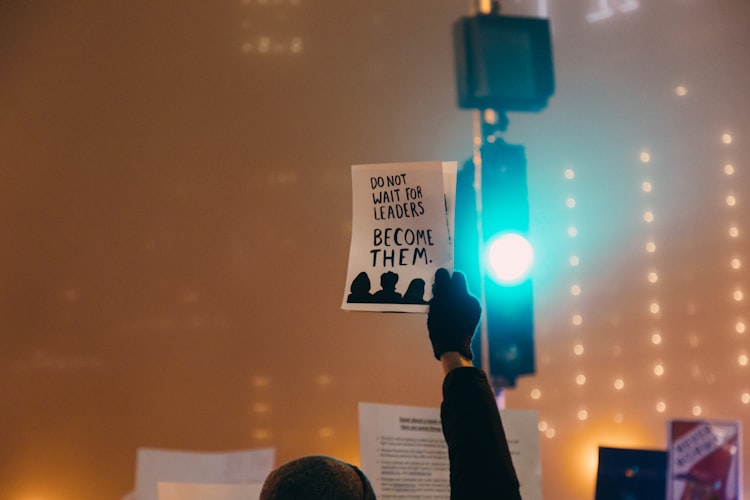Divisiveness Is an Illusion on Either Side of Balance

Thinking Queerly: 52-Weeks of Critical Reflections On Liberating Humanity
What does it say about who we are when we fight so vehemently for our opinion, for our belief that we are in the right when argument only furthers division and contention?
Welcome to my new, year-long series, “Thinking Queerly” — a revisiting of my book, “Think Queerly: Meditations & Critical Reflections On Liberating Humanity.” Over the next 52 weeks, I will be selecting and re-working the most impactful 52 passages (there are about 110) to dive deep into the well of creative metaphor — a place of paradox where queerness dances unabashedly.
These weekly submissions will take on more nuance as I explore them on my podcast, Think Queerly. But don’t worry, after each passage, I intend to resurface from metaphor and paradox with a clear explanation, along with an invitation to put the contemplation into practice. Here is the first instalment of Thinking Queerly:
Divisiveness Is an Illusion on Either Side of Balance
Both online and in the real world, there appears to be a need to be right and the need to belong to the politically correct group — and sometimes to the extreme, to be fully at the farthest end of Right or Left.
We see how arguing from extreme polarities only creates further division.
But there is no equation to be on either side of, there is only a balance.
We cannot survive on the extreme of “one side.”
Between all polarities is a middle space, a gap, in which all possibilities exist.
Balance is fluid, constantly changing, and never static.
It’s like a boat rocking from violently from side to side in high seas.
Imagine people in the boat.
A group fights to rock the boat to the left side.
The other group fights to oppose them, rocking in the opposite direction.
Neither side is seeking the safety to balance the boat and yet, each violently opposing “rocking” takes the boat through the polarity of left and right, and for the briefest of moments, the boat will crest upon balance.
Balance is the moment, the space that exists between extremes.
We cannot survive in extremes.
We thrive when we lean into balance.
An Invitation to be a Very Impactful Queer
How can you put this week’s Thinking Queerly contemplation into practice?
Between all polarities is a middle space, a gap, in which all possibilities exist.
The next time you witness extreme division online — in a Twitter storm or a heated exchange on Facebook — see if you can understand where each person is coming from. Perhaps identify the person who shared the original post, and one other person who opposed everything they are saying. What is happening in the exchange? Is there a single point of origin, a middle-ground, the gap in-between both sides of the exchange.
What is it that both sides are fighting for that is the same?
For example, most people are fighting for their rights and their freedoms as the core idea — the middle space where all possibilities exist.
For example, you might be fighting to limit gun ownership, which is freedom from violence. The other person might be fighting for the right to own a gun because they believe that is their right to protect themselves from violence. The middle ground is the same: freedom.
But what’s different is the “why,” which is an expression of one’s moral values, or one’s moral matrix. I learned about the moral matrix in the free, online program offered by OpenMind, which they describe as,
“a psychology-based educational platform designed to depolarize campuses, companies, organizations, and communities. OpenMind helps people foster intellectual humility and mutual understanding while equipping them with essential skills to engage constructively across differences.”
The team at OpenMind suggests that we try to “learn why other people believe what they believe and try to enter sympathetically into their point of view.” When we listen to another person’s viewpoint they may lower their guard and be more open to hearing our thoughts and opinions.
In my example, the person who stands for limiting or banning gun ownership is expressing the moral value of “care.” They care deeply about their well-being and safety, as well as that of others. The pro-gun owner is expressing the value of “liberty,” the right to do what they think is right to protect their well-being and safety, as well as that of others they “care” for.
This is the conundrum of our boat rocking in turbulent seas.
If we can’t find the middle-ground, the balance, we will never be able to agree to disagree, let alone have a calm and meaningful discussion.
Image Source





Member discussion